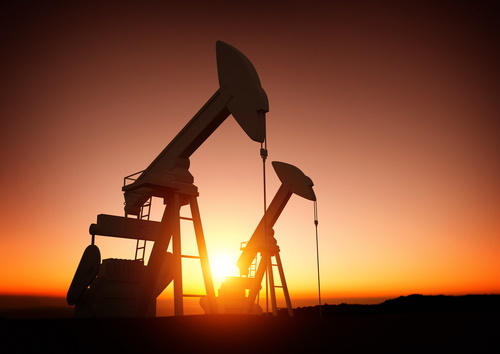When you enter the financial world, you encounter such concepts as money, currency, and fiat money. And you might wonder while hearing these words whether they differ. Are money, currency, and fiat money interchangeable synonyms or are there conceptual differences between these notions? In what follows, we are shedding some light on these concepts, dwelling longer on the concept of fiat money.
How Do Money and Currency Differ?
The two concepts of money and currency seem interchangeable, but they are fundamentally different. These are several points at which these two concepts diverge:
- Money is not tangible. They cannot be touched or smelled. Money is seen only as numbers. Currency is, by contrast, tangible. It is the promissory note or coin that can be touched, smelled, cast up or down, or kept in your wallet.
- Money takes the form of numbers. Currency is shaped like coins, banknotes, or hard plastic.
- Money can be transferred online, whereas currency must be transferred physically. You hand currencies out to another person.
What Is Fiat Money?
The concept of fiat money is not difficult to understand. The etymology of the word fiat might be helpful. This word comes from the Latin word facio – facere meaning “to do” and in Latin means “let it be done.” It, therefore, presupposes some authority behind it. When we hear the words fiat money, we hear the authoritative voice giving it permission to exist. And indeed, fiat money is currency backed by the government that issued it. Imagine the government minting fiat money and confirming its existence by its authority and you will understand the concept of fiat money.
How Does Fiat Money Differ from Commodity Money?
Another type of money – commodity money – is backed by precious commodities – gold or silver. The value of fiat money is not derived from the value of gold or silver but from the relationship between supply and demand. Its value also depends on the stability of the government that issued it rather than on the stability and worth of commodities backing it, as is the case with commodity money. Note that the majority of our paper money, be it the US dollar, the euro, or the British pound, are fiat currencies.
It is worth emphasizing that fiat money has value only because the government decides to maintain its value. Two parties in a transaction can agree on its value, too. Fiat money is inconvertible and cannot be redeemed. Because fiat money is not backed by physical reserves, such as gold or silver, it can lose value due to inflation or hyperinflation. If people stop believing in their country’s currency, it will stop having any value. Herein lies the major difference between fiat money and commodity money. Currency backed by gold or silver does have intrinsic value, absent in fiat money, because of the demand for gold in jewelry, decoration, electronic devices, or aerospace vehicles.
The credit theory of money maintains that money should not be backed by commodities or any other valuables. This theory views all money as a credit-debit relation, which in itself is binding. Therefore, to be valuable, money does not need to be backed by anything at all.
Is the US Dollar Fiat Money?
Like the majority of the major currencies, the US dollar is fiat currency. But this was not always the case. Earlier in US history, the greenback was backed by gold and sometimes silver. In 1933, however, the federal government signed the Emergency Banking Act that disallowed citizens to exchange currency for government gold. The gold standard, which backed US currency with federal gold, ended completely in 1971. That year, the government also stopped issuing gold to foreign governments in exchange for US currency.
Since 1971, the US dollars have been backed by the “full faith and credit” of the US government, “legal tender for all debts, public and private” but not “redeemable in lawful money at the United States Treasury or at any Federal Reserve Bank,” according to the words formerly written on the American banknotes. These days, US dollars are “legal tender,” rather than “lawful money,” exchanged for gold or silver.
Advantages of Fiat Money
At TRADERPROFX, you will be able to understand that fiat money plays the role of a country’s money by storing value, providing a numerical account, and facilitating exchange but it shouldn’t be like that, boring, you can make some money from it. Fiat currencies became particularly popular in the twentieth century because governments and central banks wanted to protect their economies from the worst effects of the natural blossoming and crush of the business cycles. Because fiat money is not as rare as gold, central banks have more control over its supply. Having this control over money gives them the power to manage economic variables – interest rates, liquidity, credit supply, and money velocity. Fiat money gives governments the flexibility to manage their currency, set monetary policy, and even stabilize global markets. Commercial banks can also increase the amount of money in circulation when they need to meet particular demands from borrowers.
What Are the Alternatives to Fiat Money?
Gold and silver coins were used to participate in monetary exchanges. These days, you can definitely buy or sell gold or gold coins but you cannot use them in exchange for everyday purchases. Gold and gold coins have turned into speculative assets.
Many people view Bitcoin and other altcoins as a new alternative to fiat money since they challenge their inflationary nature. And yet, even though the popularity of digital coins has been growing, they have not become money in our traditional understanding of the concept.
What are Commodities?
At TRADERPROFX, together with such traditional securities as stocks and currencies, traders invest in commodities. Simply put, a commodity is a basic good used in commerce and interchanged with other goods of the same type. The most common examples of commodities traded these days at financial markets are oil, natural gas, gold, silver, platinum, grains, and beef. Traders invest in these commodities for several reasons: they either want to make their trading portfolio more varied, adding commodities to other securities they trade, or they turn to commodities in the time of economic or political instability when markets are beset with volatility. The truth is that prices of commodities usually move in the opposite direction from stocks or currencies. When, say, the American dollar sinks and extends its losses for a considerable period of time, traders begin to buy gold, traditionally looked at as a haven in hard times. When the dollar dips, the prices of gold, as a rule, climb.
Risk Involved in Trading Commodities
Compared to other securities, commodities are thought to present bigger risks, because their supply and demand are influenced by unpredictable uncertainties such as weather, natural disasters, and epidemics. Prices of commodities are also impacted by changes in supply. If there is a low supply of a specific commodity, its prices skyrocket. Thus, large increases in agricultural prices from 2010 to 2011 in the USA happened because the production of some goods stagnated, while demand rose. Oversupply of a commodity, by contrast, causes its prices to drop. Oil prices have long been sinking due to its recurrent oversupply, related to economic shifts in China and oil producers’ inability to stop pumping more oil. Commodities’ dependence on events outside of traders’ control requires extra caution and deep knowledge of financial markets. This is where TRADERPROFX comes into the picture.
Why Should You Trade Commodities with TRADERPROFX?
TRADERPROFX has years of trading experience to its credit and is qualified to give a valuable piece of advice on how to trade commodities. We have also compiled a rich collection of educational materials to assist our customers on their trading journey. Consisting of webinars, videos, booklets, seminars, and markets’ reviews, our educational resources will explain to you the specificity of trading commodities and will prepare you for the profitable trading of metals, oil, or any agricultural goods in which you will choose to invest.
In addition to helpful educational materials, TRADERPROFX has a sophisticated trading platform, specifically designed for trading a large number of commodities. Our platform does not only offer advanced risk management and analytical tools that will safeguard you against monetary losses but it also allows you to invest in all types of commodities: metal, energy, livestock and meat, and agricultural. Our platform also lets traders invest in commodities using futures and ETFs and Notes.
Types of Commodities Traded at TRADERPROFX
Our platform is so designed that you can invest in any type of commodities, be that metal, energy, livestock, or agricultural goods, in keeping with your trading interests or trading style. Please, read on to understand the basic differences between these four types of commodities.
Metals

People have been trading precious metals for thousands of years and continue doing so with equal gusto and consistency. Metals such as gold, silver, platinum, and copper tend to grow in value, because they are reliable assets, particularly when markets are volatile. When markets enter negative territory, investors usually turn to gold and, in doing so, manage not only to weather an economic storm but also earn profits. Traders invest in precious metals as protection against periods of high inflation or currency devaluation. At TRADERPROFX, you are welcome to invest in metals to diversify your trading portfolio. The metals you will trade with us are as follows:
- Gold
- Silver
- Platinum
- Palladium
Note that bids, spreads, market rates, and margin requirements vary from country to country. But whatever are these variations, we always help our clients trade precious metals at a profit and safeguard them from financial risks.
Energy

Energy commodities that you can trade with us include crude oil, heating oil, natural gas, and gasoline. Trading growth in this category reflects the economic growth of traders, of the whole organization, or of the whole nation. Traders usually earn profits by trading oil, but you should be aware of several caveats if you intend to invest in this commodity. Oil prices are influenced by several factors: economic decline, shifts in oil productions orchestrated by OPEC, and new technological inventions of alternative energy sources. At TRADERPROFX, we take these factors into consideration and guide our clients through trading commodities step-by-step to a successful conclusion of their trades.
Agriculture

TRADERPROFX also gives you an opportunity to invest in agricultural goods such as corn, wheat, rice, cocoa, coffee, soybeans, sugar, and cotton. What you need to remember, however, if you plan to trade these commodities, is that they are dependent on seasons and changes in weather. Prices of all grains are usually volatile during summer or between seasons. Note also that although these commodities are influenced by such unpredictable factors as weather and natural disasters, they allow more room for profit than do oil or natural gas. The world’s population is on the rise, while agricultural supply is severely limited. The shortage of agricultural goods in the world pushes their prices up, inviting traders to capitalize on these changes in prices and earn extra money.
How to Trade Commodities with TRADERPROFX?
TRADERPROFX invites traders to invest in commodities through a futures contract, which is a legal agreement to purchase or sell a certain commodity at a fixed rate at a certain time in the future. Futures contracts are available for all types of commodities traded with our help. What you will find particularly convenient with a future contract is taking long or short positions when trading. Another trading option we provide is ETFs and ETNs. Similar to stocks, ETFs and ETNs allow you to profit from fluctuations in commodity prices without signing future contracts. But remember to check whether the commodity you want to trade has ETFs and ETNs associated with them, because not all commodity assets have this trading option.
